It looks like you're using an Ad Blocker.
Please white-list or disable AboveTopSecret.com in your ad-blocking tool.
Thank you.
Some features of ATS will be disabled while you continue to use an ad-blocker.
share:
a reply to: TzarChasm
How the hell does this get 5 stars?
There is also the whole issue of history, but ok. If you are willing to concede the man existed, that is at least the point of the OP, isn't it?
You seem to be puckered right up, yourself.
Thanks for the notice?
How the hell does this get 5 stars?
there is only one point to arguing about jesus, and that is in clearly outlining the nature of his divinity.
There is also the whole issue of history, but ok. If you are willing to concede the man existed, that is at least the point of the OP, isn't it?
and thats to decide how much ass you should be kissing.
You seem to be puckered right up, yourself.
but you are right, thats my opinion.
its a free forum.
Thanks for the notice?
originally posted by: Observationalist
I know you can find other sources, but I thought it was important to show the dishonest intent among some atheist to discredit anything Christian. Do you think that the anti religious atheist dogma might be corrupting the research?
Yes, I have put up similar sources of peer reviewed works from historians that say much the same thing. If being biased towards rationality and reason or raising relevant points is something you equate with dishonesty, then so be it. The fact is there are 0 contemporary historical references to jesus. There are 0 references to any contemporary writer whose works are non extant, that mention jesus.
It won't really matter to atheists if jesus existed. It wont convert them or change their stance one iota. Not so for religious scholars who pretend to be objective, but fanatically cling to the myth usually because they believe the whole thing, magic and all. The best they can do is promote and give undue importance to spurious 2nd century mentions that at best amount to hearsay, while at the same time overlooking all the reasons that point more to pious forgery. It's confirmation bias.
a reply to: DeadSeraph
the point of the op is to establish the foundation for his/her particular flavor of mythos. proving jesus existed seems to be the smoking gun for proving god, which strikes me as somewhat premature. im just kind of poking at that, but i guess its a raw nerve, judging by some reactions...
There is also the whole issue of history, but ok. If you are willing to concede the man existed, that is at least the point of the OP, isn't it?
the point of the op is to establish the foundation for his/her particular flavor of mythos. proving jesus existed seems to be the smoking gun for proving god, which strikes me as somewhat premature. im just kind of poking at that, but i guess its a raw nerve, judging by some reactions...
edit on 29-4-2015 by TzarChasm because: (no reason given)
originally posted by: TzarChasm
a reply to: DeadSeraph
There is also the whole issue of history, but ok. If you are willing to concede the man existed, that is at least the point of the OP, isn't it?
the point of the op is to establish the foundation for his/her particular flavor of mythos. proving jesus existed seems to be the smoking gun for proving god, which strikes me as somewhat premature. im just kind of poking at that, but i guess its a raw nerve, judging by some reactions...
Where have I or the the OP brought up God in this thread? Can you quote either of us?
originally posted by: DeadSeraph
originally posted by: TzarChasm
a reply to: DeadSeraph
There is also the whole issue of history, but ok. If you are willing to concede the man existed, that is at least the point of the OP, isn't it?
the point of the op is to establish the foundation for his/her particular flavor of mythos. proving jesus existed seems to be the smoking gun for proving god, which strikes me as somewhat premature. im just kind of poking at that, but i guess its a raw nerve, judging by some reactions...
Where have I or the the OP brought up God in this thread? Can you quote either of us?
dont jesus and god kind of go hand in hand?
edit on 29-4-2015 by TzarChasm because: (no reason given)
a reply to: TzarChasm
No, they really don't, when the issue is whether or not the person existed in history. Why do you think so many atheist and agnostic historians contend that he existed? If one is dependent on the other, don't you think people like Bart Ehrman (or pretty much every other historian in academia) would be siding with the mythicists?
Furthermore, wouldn't one of the worlds leading anti-theists and evolutionists refuse to acknowledge that fact if the entire premise depended on Gods existence?
I think you have nailed the issue on the head. Mythicists want to deny history precisely because they want to do anything to deny the Christian version of God. If they can destroy one, they can destroy the other. The problem is that the two are independent issues, or at least they are to anyone with a bit of objectivity and common sense.
No, they really don't, when the issue is whether or not the person existed in history. Why do you think so many atheist and agnostic historians contend that he existed? If one is dependent on the other, don't you think people like Bart Ehrman (or pretty much every other historian in academia) would be siding with the mythicists?
Furthermore, wouldn't one of the worlds leading anti-theists and evolutionists refuse to acknowledge that fact if the entire premise depended on Gods existence?
I think you have nailed the issue on the head. Mythicists want to deny history precisely because they want to do anything to deny the Christian version of God. If they can destroy one, they can destroy the other. The problem is that the two are independent issues, or at least they are to anyone with a bit of objectivity and common sense.
edit on 29-4-2015 by DeadSeraph because: (no reason given)
originally posted by: Cogito, Ergo Sum
Thanks for the more detailed reply, I'm not one who clings to apologetics, I was more interested in your response. I understand that wishful thinking can be observed as you look through various apologetics. But I will also contend that wishful thinking can be observed in the "rational" atheist counters.
For instance; you highlighted this in your recent Tacitus post I first replied to. I found the same quote from another source linked below
This may seem rational to him, but I see this just as wishful thinking don't you? It could also be restated by a Christian like this: "which is probably the deliberate excision of Jewish scribes who were embarrassed by the overwhelming documentation of events surrounding Jesus ministry that exposes the flaws of the Jewish leadership at that time"(this just an example not my real opinion on the gaps)
The word "Probably" is the issue. especially with such a crucial assumption.
My point, Wishful thinking can be observed in both sides of the argument, even from the most rational of sources.
Thanks for the more detailed reply, I'm not one who clings to apologetics, I was more interested in your response. I understand that wishful thinking can be observed as you look through various apologetics. But I will also contend that wishful thinking can be observed in the "rational" atheist counters.
For instance; you highlighted this in your recent Tacitus post I first replied to. I found the same quote from another source linked below
bolded text is my edit
Richard Carrier writes: "...we are enormously lucky to have Tacitus--only two unrelated Christian monasteries had any interest in preserving his Annals, for example, and neither of them preserved the whole thing, but each less than half of it, and by shear luck alone, they each preserved a different half. And yet we still have large gaps in it. One of those gaps is the removal of the years 29, 30, and 31 (precisely, the latter part of 29, all of 30, and the earlier part of 31), which is probably the deliberate excision of Christian scribes who were embarrassed by the lack of any mention of Jesus or Gospel events in those years (the years Jesus' ministry, death, and resurrection were widely believed at the time to have occurred). There is otherwise no known explanation for why those three years were removed.The other large gap is the material between the two halves that neither institution preserved. And yet another is the end of the second half, which scribes also chose not to preserve (or lost through negligent care of the manuscript, etc.)."Rational Response Squad]
This may seem rational to him, but I see this just as wishful thinking don't you? It could also be restated by a Christian like this: "which is probably the deliberate excision of Jewish scribes who were embarrassed by the overwhelming documentation of events surrounding Jesus ministry that exposes the flaws of the Jewish leadership at that time"(this just an example not my real opinion on the gaps)
The word "Probably" is the issue. especially with such a crucial assumption.
My point, Wishful thinking can be observed in both sides of the argument, even from the most rational of sources.
edit on 30-4-2015 by Observationalist because: Fixed external text
edit on 30-4-2015 by Observationalist because:
Clarity
edit on 30-4-2015 by Observationalist because: More fixing
a reply to: DeadSeraph
jesus is far more important to those who recognize a god than to those who do not. more precisely, those who recognize a god would be far more damaged by the possibility that jesus did not actually exist. especially if that possibility became fact.
jesus is far more important to those who recognize a god than to those who do not. more precisely, those who recognize a god would be far more damaged by the possibility that jesus did not actually exist. especially if that possibility became fact.
a reply to: Cogito, Ergo Sum
Question- Are there contemporary historical references to the biblical Saul or also regarded as Paul? Also are there contemporary historical references to any of the biblical twelve Apostles?
The fact is there are 0 contemporary historical references to jesus. There are 0 references to any contemporary writer whose works are non extant, that mention jesus.
Question- Are there contemporary historical references to the biblical Saul or also regarded as Paul? Also are there contemporary historical references to any of the biblical twelve Apostles?
a reply to: Cogito, Ergo Sum
First of all, coins with the face of someone doesn't mean that person was real. There are plenty of coins with Greek, and Roman gods and godesses.
goddess Iuno/Juno.
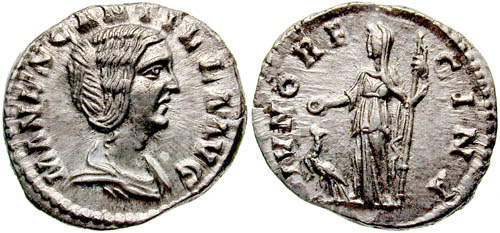
god neptune.
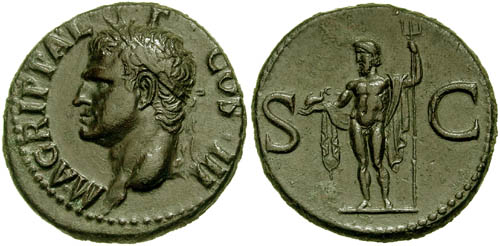
god Mars.
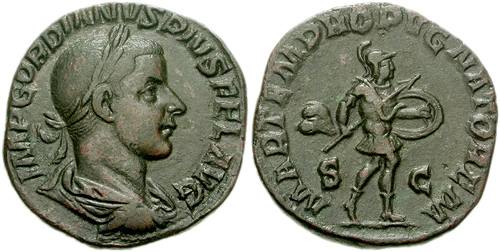
There are coins of every god and goddess from Greeks/Romans and other nations. Are you going to claim those are evidence of their historicity?...
BTW, it is ironic that you mention the Khalili collection, since Khalili has gone on record to state as a matter of fact that Jesus was a historical figure.
www.biblicalarchaeology.org...
You have to wonder what does a Persian-Jewish scholar and collector who has some of the world's most extensive libraries of Aramaic, Islamic and other ancient collections know about Jesus, since he refers to Jesus as being an authentic historical figure, that Cogito Ergo Sum among other mythicists don't know...
BTW, the biographies of Alexander the Great were written after his death. Of course you will find some references mentioning some of his battles in earlier accounts... But most of what we know about his life was not written by contemporary scholars...
First of all, coins with the face of someone doesn't mean that person was real. There are plenty of coins with Greek, and Roman gods and godesses.
goddess Iuno/Juno.

god neptune.

god Mars.

There are coins of every god and goddess from Greeks/Romans and other nations. Are you going to claim those are evidence of their historicity?...
BTW, it is ironic that you mention the Khalili collection, since Khalili has gone on record to state as a matter of fact that Jesus was a historical figure.
...
Khalili recalls as a youngster visiting the tomb of Queen Esther in Hamadan in northwestern Persia. Lithographs in the volume of the imposing tomb and Esther’s sarcophagus (below) make it easily understandable that they would make a lifelong impression on the young Khalili.
The documents published here are in Aramaic. “I will never forget the evocative sounds of spoken Aramaic that I first heard as a child,” Khalili recalls. It was the language of the Persian empire, as well as the Talmud and, he observes, “the language Jesus spoke when addressing his disciples and followers.”
...
www.biblicalarchaeology.org...
You have to wonder what does a Persian-Jewish scholar and collector who has some of the world's most extensive libraries of Aramaic, Islamic and other ancient collections know about Jesus, since he refers to Jesus as being an authentic historical figure, that Cogito Ergo Sum among other mythicists don't know...
BTW, the biographies of Alexander the Great were written after his death. Of course you will find some references mentioning some of his battles in earlier accounts... But most of what we know about his life was not written by contemporary scholars...
edit on 30-4-2015 by ElectricUniverse because: correct comment.
Apart from the claim by mythicists that Jesus must be a myth because no contemporary wrote about him. One of the examples they give is Philo of
Alexandria. A Hellenistic Jewish philosopher who lived in Alexandria and as far as I know visited Jerusalem once.
It seems that mythicists would believe that 2,000 years ago foreigners who visited Jerusalem once, all must have known about Jesus, but that doesn't have to be the case. But Philo lived in Alexandria, and was concerned mainly by the plight of the Alexandrian Jewish community. He was the principal representative of the Alexandrian Jewish community and brought for their plight before the Roman emperor Gaius Caligula.
Philo was a philosopher, and not a historian. His lack of mention about Jesus is no proof that Jesus was a myth like mythicists claim.
It seems that mythicists would believe that 2,000 years ago foreigners who visited Jerusalem once, all must have known about Jesus, but that doesn't have to be the case. But Philo lived in Alexandria, and was concerned mainly by the plight of the Alexandrian Jewish community. He was the principal representative of the Alexandrian Jewish community and brought for their plight before the Roman emperor Gaius Caligula.
Philo was a philosopher, and not a historian. His lack of mention about Jesus is no proof that Jesus was a myth like mythicists claim.
edit on 30-4-2015 by ElectricUniverse because: correct comment.
a reply to: ElectricUniverse
That's a fun article!
Here's your Star Of Bethlehem
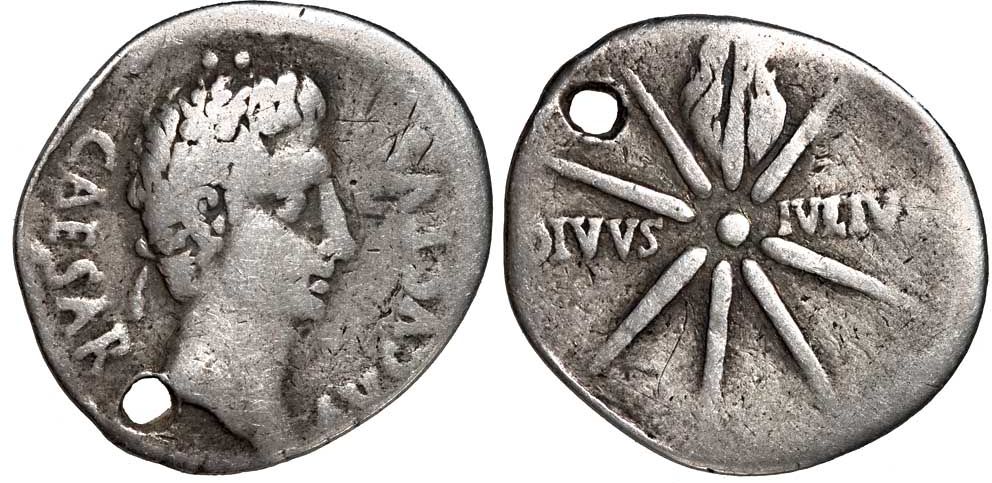
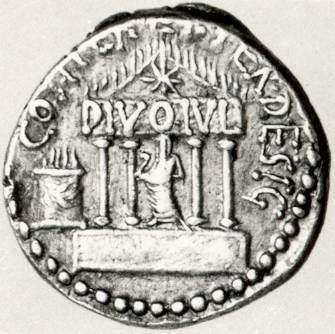
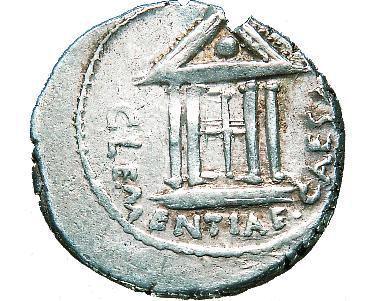
In Ovid's poem, The Metamorphis, he describes the moment that J.C. was "taken up to the stars" and became a "God".
As for the day of the death of Jesus; the earthquakes, the sun and sky turning dark, tombs opening and dead walking about.......
The Destruction of Pompeii, 79 AD
So, based on historical and biblical records, we could safely say that Jesus was born in 44 BC and died in 79AD, making him around 135 when he was crucified!
When Julius Caesar died in 44 BC, his effigy was hung on a cross, crosses were placed in temples and minted on coins.
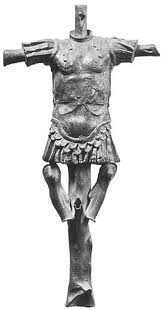
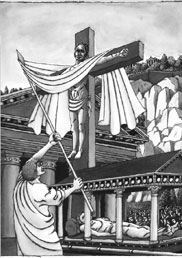

You've got plenty of evidence for a mythical Jesus, a composite character, just in this thread alone!
(Reposted from this very thread)
There is no direct contemporaneous evidence that such a singular man existed. There were, instead many jesus-like preachers who became the conglomeration of the figure used today. This article points out the many different facets that just don't fit together: www.patheos.com...
That's a fun article!
Why does Seneca the Younger record all kinds of unusual natural phenomena in the seven books of his Quaestiones Naturales, including eclipses and earthquakes, but not mention the Star of Bethlehem, the pair of Judean earthquakes that were strong enough to split stones, or the hours of supernatural darkness that covered “all the land” – an event he would have witnessed firsthand?
Read more: www.patheos.com...
Here's your Star Of Bethlehem
Caesar's Comet (numerical designation C/-43 K1) – also known as Comet Caesar and the Great Comet of 44 BC – was perhaps the most famous comet of antiquity. The seven-day visitation was taken by Romans as a sign of the deification of the recently dead dictator, Julius Caesar (100–44 BC).
Caesar's Comet was one of only five comets known to have had a negative absolute magnitude and was possibly the brightest daylight comet in recorded history. It was not periodic and may have disintegrated.

The Comet became a powerful symbol in the political propaganda that launched the career of Caesar's great-nephew (and adoptive son) Augustus. The Temple of Divus Iulius (Temple of the Deified Julius) was built (42 BC) and dedicated (29 BC) by Augustus for purposes of fostering a "cult of the comet". (It was also known as the "Temple of the Comet Star".[5]) At the back of the temple a huge image of Caesar was erected and, according to Ovid, a flaming comet was affixed to its forehead:
To make that soul a star that burns forever
Above the Forum and the gates of Rome


In Ovid's poem, The Metamorphis, he describes the moment that J.C. was "taken up to the stars" and became a "God".
Then Jupiter, the Father, spoke..."Take up Caesar’s spirit from his murdered corpse, and change it into a star, so that the deified Julius may always look down from his high temple on our Capitol and forum." He had barely finished, when gentle Venus stood in the midst of the Senate, seen by no one, and took up the newly freed spirit of her Caesar from his body, and preventing it from vanishing into the air, carried it towards the glorious stars. As she carried it, she felt it glow and take fire, and loosed it from her breast: it climbed higher than the moon, and drawing behind it a fiery tail, shone as a star.
As for the day of the death of Jesus; the earthquakes, the sun and sky turning dark, tombs opening and dead walking about.......
The Destruction of Pompeii, 79 AD
Ashes were already falling, not as yet very thickly. I looked round: a dense black cloud was coming up behind us, spreading over the earth like a flood.'Let us leave the road while we can still see,'I said,'or we shall be knocked down and trampled underfoot in the dark by the crowd behind.'We had scarcely sat down to rest when darkness fell, not the dark of a moonless or cloudy night, but as if the lamp had been put out in a closed room.
You could hear the shrieks of women, the wailing of infants, and the shouting of men; some were calling their parents, others their children or their wives, trying to recognize them by their voices. People bewailed their own fate or that of their relatives, and there were some who prayed for death in their terror of dying. Many besought the aid of the gods, but still more imagined there were no gods left, and that the universe was plunged into eternal darkness for evermore.
There were people, too, who added to the real perils by inventing fictitious dangers: some reported that part of Misenum had collapsed or another part was on fire, and though their tales were false they found others to believe them. A gleam of light returned, but we took this to be a warning of the approaching flames rather than daylight. However, the flames remained some distance off; then darkness came on once more and ashes began to fall again, this time in heavy showers. We rose from time to time and shook them off, otherwise we should have been buried and crushed beneath their weight. I could boast that not a groan or cry of fear escaped me in these perils, but I admit that I derived some poor consolation in my mortal lot from the belief that the whole world was dying with me and I with it."
So, based on historical and biblical records, we could safely say that Jesus was born in 44 BC and died in 79AD, making him around 135 when he was crucified!
When Julius Caesar died in 44 BC, his effigy was hung on a cross, crosses were placed in temples and minted on coins.



You've got plenty of evidence for a mythical Jesus, a composite character, just in this thread alone!
(Reposted from this very thread)
edit on 30-4-2015 by windword because: (no reason given)
a reply to: DeadSeraph
You mean, kinda like how you mock, ridicule, and attack anyone who doesn't agree with you???? (yep, admittedly I do it, too. Turn-about is fair play)
Also - I noticed lately that you have said "I don't claim to be a Christian because I suck at it" (or something like that), but then again, you defend Christianity.............
while you are laughing, mocking, insulting, judging, and dissing people who are discussing the issue logically.
Just sayin'. Christ-like? Erm, no.
Fraud.
I'm just curious. Do you have some sort of template saved, so that you can keep regurgitating it no matter how many times it is refuted?
You mean, kinda like how you mock, ridicule, and attack anyone who doesn't agree with you???? (yep, admittedly I do it, too. Turn-about is fair play)
Also - I noticed lately that you have said "I don't claim to be a Christian because I suck at it" (or something like that), but then again, you defend Christianity.............
while you are laughing, mocking, insulting, judging, and dissing people who are discussing the issue logically.
Just sayin'. Christ-like? Erm, no.
Fraud.
edit on 4/30/2015 by BuzzyWigs because: (no reason given)
a reply to: DeadSeraph
LOL! Nice insult.
You know what, though? It takes the average person at least five times of hearing a message before they comprehend it.
Most people do not absorb or comprehend what is said to them before it's been presented at least five times.
Advertising Your Brand: How Many Times Do Consumers Need to See/Hear It Before They Buy?
Yeah.
Just - think it over. Think about little kids hearing the same damned shaming worthlessness message...for not 3 or 5 times, but.....WEEKLY, for YEARS.
Yeah. Not healthy.
Do you have some sort of template saved, so that you can keep regurgitating it no matter how many times it is refuted?
LOL! Nice insult.
You know what, though? It takes the average person at least five times of hearing a message before they comprehend it.
Most people do not absorb or comprehend what is said to them before it's been presented at least five times.
(emphasis added by me)
Krugman initially concluded that the magic number was three. In other words, after seeing or hearing about a product or brand three times, consumers would take an action. As he explained it,
“The first time someone is exposed to your ad, you attract their attention, but nothing is really taken in, thus “What is it?”.
The second time is when the consumer begins to engage with the relevance of the ad, and asks “So what?”
And the third exposure to the ad is when the viewer decides whether “This is for me”, or whether they will choose to forget it.”
Of course, a number of factors impact this ad frequency theory, for example: how well known the product or brand is already, the audience category, the complexity of the product or message, the cost structure of the product, the saturation level of the market, and more.
brain, advertising, theory of effective frequencyLater research (including some done by Krugman) suggested the number was more than 3 . For example, Canadian Grant Hicks decided it was five touches, based on his research on financial advisors and their clients. Nielsen media guru Erwin Ephron’s work lead him to conclude it was three to five touches. More recently, a Nielsen study claims ten social media touches are needed to effect a behavior change.
Whether the number is 3 or 5 or more, the point here is that you’ve got to get your product in front of your customers multiple times in order for them to take the action you want.
Advertising Your Brand: How Many Times Do Consumers Need to See/Hear It Before They Buy?
Yeah.
Just - think it over. Think about little kids hearing the same damned shaming worthlessness message...for not 3 or 5 times, but.....WEEKLY, for YEARS.
Yeah. Not healthy.
edit on 4/30/2015 by BuzzyWigs because: (no reason given)
a reply to: ElectricUniverse
And....
there are plenty of coins and fiat-paper-bills that say "In God We Trust."
Does that mean the person is "real"?
Nope.
No.
It's not different - Roman gods and goddesses, or Christian god and god....it's no proof that any of them are "real."
Seriously, you don't get this???
First of all, coins with the face of someone doesn't mean that person was real. There are plenty of coins with Greek, and Roman gods and godesses.
And....
there are plenty of coins and fiat-paper-bills that say "In God We Trust."
Does that mean the person is "real"?
Nope.
No.
It's not different - Roman gods and goddesses, or Christian god and god....it's no proof that any of them are "real."
Seriously, you don't get this???
a reply to: DeadSeraph
The title of the thread is "Is There Evidence that Jesus Christ existed? Yes, there is."
When you call him "Christ" you are appending the title of divinity and saying he is "God" (in this thread).
There may very well have been a man called "Jesus" (like thousands of other desert-dwelling iron-age citizens)....
but only Christians claim that he was "God."
Whether you like it, or accept it, or not...........
NOT EVERYONE agrees, and they haven't "agreed" for
well, ever.
Not Everyone Agrees. And that is not going to happen....did some guy called Joe walk around in 30 AD talking to people about treating each other with compassion and kindness? Maybe.
Does that make him "God"?
Nope.
Where have I or the the OP brought up God in this thread? Can you quote either of us?
The title of the thread is "Is There Evidence that Jesus Christ existed? Yes, there is."
When you call him "Christ" you are appending the title of divinity and saying he is "God" (in this thread).
There may very well have been a man called "Jesus" (like thousands of other desert-dwelling iron-age citizens)....
but only Christians claim that he was "God."
Whether you like it, or accept it, or not...........
NOT EVERYONE agrees, and they haven't "agreed" for
well, ever.
Not Everyone Agrees. And that is not going to happen....did some guy called Joe walk around in 30 AD talking to people about treating each other with compassion and kindness? Maybe.
Does that make him "God"?
Nope.
a reply to: DeadSeraph
You crack me up.
Lame.
Yeah, right, I've NEVER offered ANYTHING constructive to the argument over whether or not some guy was the "son of God" any more than the rest of us are.
But - I know it's not just me that you deride....nono, you do this to ANYONE who challenges your precious (desperate) beliefs.
You and I have already broken up. I'm just saying what I think.
Problem?
I'm still not sure you've ever actually offered anything constructive to this argument on ATS?
Is this your best?
You crack me up.
Lame.
Yeah, right, I've NEVER offered ANYTHING constructive to the argument over whether or not some guy was the "son of God" any more than the rest of us are.
But - I know it's not just me that you deride....nono, you do this to ANYONE who challenges your precious (desperate) beliefs.
You and I have already broken up. I'm just saying what I think.
Problem?
new topics
top topics
-
Plane Crash in South Korea
Mainstream News: 12 hours ago, 9 flags -
Cutting Boards
Food and Cooking: 15 hours ago, 8 flags -
Mexico Plans Alert App For Migrants Facing Arrest In US
Mainstream News: 16 hours ago, 6 flags
active topics
-
Plane Crash in South Korea
Mainstream News • 13 • : Flyingclaydisk -
Kurakhove officially falls. Russia takes control of major logistics hub city in the southeast.
World War Three • 26 • : Oldcarpy2 -
Christmas Car Near Detroit…
Automotive Discussion • 14 • : JJproductions -
Cutting Boards
Food and Cooking • 7 • : Hypntick -
Why Such An Uproar Over Non-US Citizens With H1-B Work Visas.
Social Issues and Civil Unrest • 50 • : cherokeetroy -
UK Borders are NOT Secure!
Social Issues and Civil Unrest • 20 • : angelchemuel -
New York Governor signs Climate Law that Fines Fossil Fuel Companies
US Political Madness • 34 • : Asktheanimals -
Danish Prime Minister said to keep 3 days worth of canned goods on hand
World War Three • 12 • : xuenchen -
Trump's idea to make Canada the 51st US state: 'Potential is massive'
Mainstream News • 110 • : angelchemuel -
Petition Calling for General Election at 564,016 and rising Fast
Political Issues • 187 • : elevatedone
